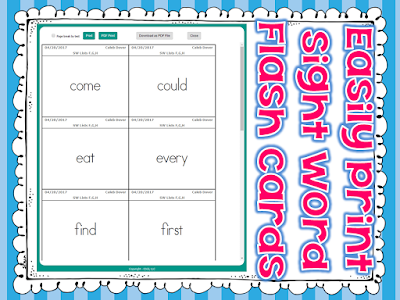
First, let's look at how our brain actually learns a word. This will make sure that we are optimizing our teaching time.
Steps to Learn a New Word:
1. Show the child the word.2. Discuss the word.
3. Mix-up, or cover up, the word.
4. Have the children use magnetic letters, shaving cream, dry erase board, etc., to make the word without look at your word.
5. After they write the word, show the child your word and compare their word to yours.
6. If necessary, try again from the beginning.
Let's look at this example, to see what it looks like in action.
1. Each child has a piece of black paper taped to the ground. Shaving cream is on the paper.
2. I write a word on the dry erase board. In this case I have written "can".
3. We talked about the word, how many letters, spelled it, etc.
4. I hid my word. The reasons we are hiding the word is to train the brain to look at the word as a unit. If we don't hide the word, the kids write a c and an a and a n. They do not write can.
5. The children attempt to write the word in the shaving cream. If they are unable to write the complete word, have the children "erase" the word.
6. Show them the word again. Talk about it again. Hide it again. Let them try it again...and again, and again....You get the point, right?
7. The good news is....the brain is very trainable! After a few sessions, the kids will start to catch on. The brain will begin to see the word as a chunk. This is why kids can learn to read sight words without knowing the letters!
Parking Lot Words
Another thing we can do to help our children be successful with sight words is to develop a "parking lot" for new words. Each week, we add new words to our word wall. On Monday, instead of putting the new words on the word wall, we put them on our "Parking Lot". The words stay there until Friday when they are moved to the actual word wall. The Parking Lot keeps the new words front and center. It lets you know which words to spotlight during charting, games, etc. You can get the Parking Lot and word list freebee below.
Word Rings
Just because the word is on the word wall doesn't mean that the kids all know the word. In the same note, just because a word isn't on the word wall doesn't mean that they don't know that word. The word wall is adjusted to meet grade level standards. But, as we know, some kids work above that standards while others struggle to meet it. How can we differentiate the words are kids are learning and still maintain a classroom word wall? We use word rings. Here's how they work.1. First, we test each child over the words on the list. If you have a lot of words, you might want to start with just the first 20 or so. The list of words should match the first 20 words that will be added to the word wall.
2. Pick one child and ask him the words. Highlight any words he knows. (Or use ESGI! This screenshot shows what is on the ESGI assessment.)
But, when you are assessing, the kids will see this screen with one word at a time. As each word appears on the screen, you will be prompted to indicate if they know the word or if they don't know the word.
3. Now it's time to make a ring of words for each child. Add the highlighted words to a ring. Put the child's name on the ring. You can print your own word cards, or use the flash cards that are included with ESGI. 4. Repeat for all of the children in the room.
5. Each day, invite each child to read their ring of words. I do this in the morning as they are coming in, during centers, etc.
6. Each child needs a 70%/30% ratio of known to unknown words. That means, if a child has 10 words on their ring, they should have 7 words they know, and 3 words they do not know.
7. As a child masters a word, add a new word to the ring, never having more than 30% of known words.
The parent letter on ESGI is one place where you will find the known and unknown words. There is a bar graph that you can use as well. Use this promo code to try ESGI for Free and to Save if you decide to purchase. http://www.esgisoftware.com/ESGI/?promo=adsit














































































